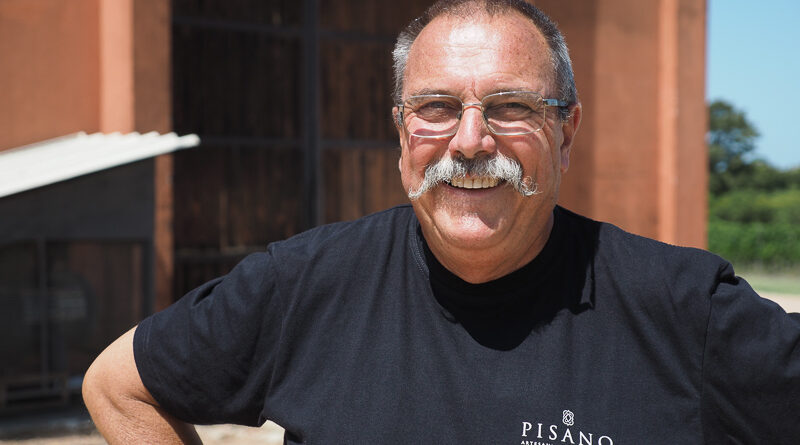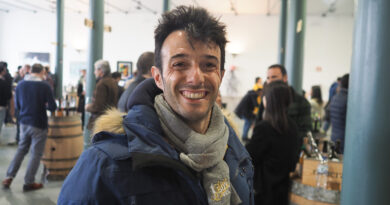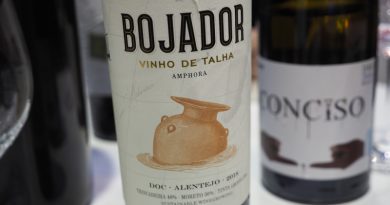In Uruguay: Pisano and Viña Progreso
Pisano is one of Uruguay’s best-known producers. It’s run by three brothers, Daniel, Eduardo and Gustavo. They have forged a path on export markets that other Uruguayan producers are now following. And with Daniel’s nephew Gabriel now involved, they are also a winery that has the potential to evolve and adapt.
The Pisano family have a split heritage. Italian and Basque. Daniel’s name is actually Pisano Arretxea (the mother’s surname). ‘We have an Italian heart and a Basque head,’ he says.
‘We are by the Ocean, and our wines could be the most European in South America,’ says Daniel Pisano (pictured above), talking generally about the wines of Urugauy. ‘We are small: we only have 6000 hectares in Uruguay. We were in VinExpo, and after the fair we went to visit vineyards. We went to Saint-Emilion and someone said how many hectares do you have in Uruguay? 6000. Oh, just like us in Saint-Emilion.’
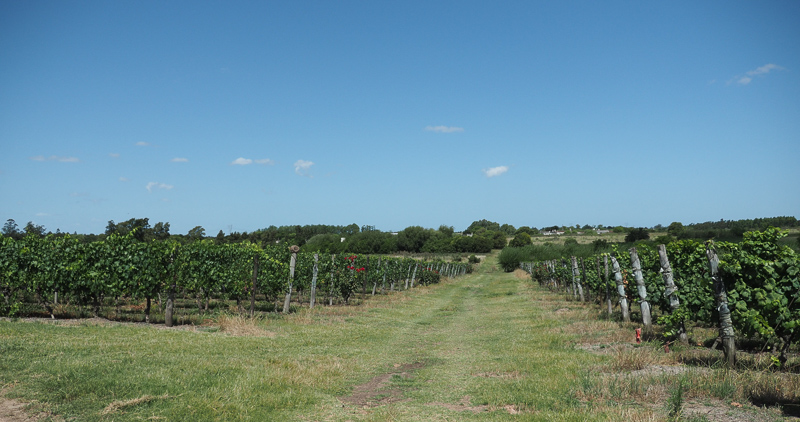
‘My grandfather started here in 1916,’ says Daniel. ‘He was a poor Italian immigrant.’ He made his first wine here in 1924, after previously selling his grapes. In 1923 he had a good crop and and made enough money that he could order some toneles to make wine in. They are made of Slavonian oak. ‘We only started exporting in 1998 and our first market was the UK.’ They are now with Ellis of Richmond after their previous importer got too big for them.
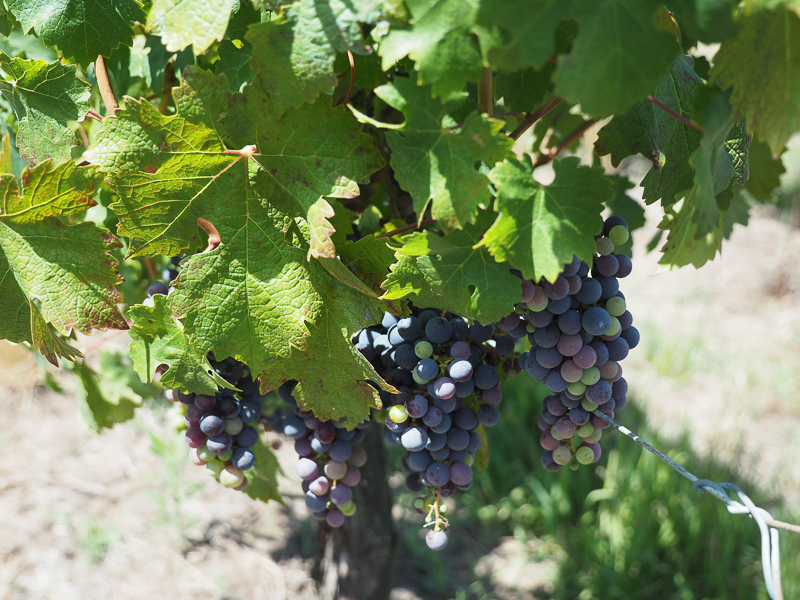
We look at the vineyards, and by this stage on the trip I’m getting to recognize the leaf shape of Tannat. ‘They say it has the shape of a heart,’ says Daniel. ‘Our heart is Tannat. It is quite green and rugged so it is easily recognizable. It’s veraison, so they’ll start doing a green harvest. Yields here are quite high, at 10 tons/hectare. ‘We ask two kilos per plant: this is a very productive grape. It could do 20 or 30 tons.’ They have 5000 plants per hectare. They also have another vineyard in the Progreso region.
A short film of the visit:
On top of one of the posts in the vineyard is a distinctive oven bird nest.
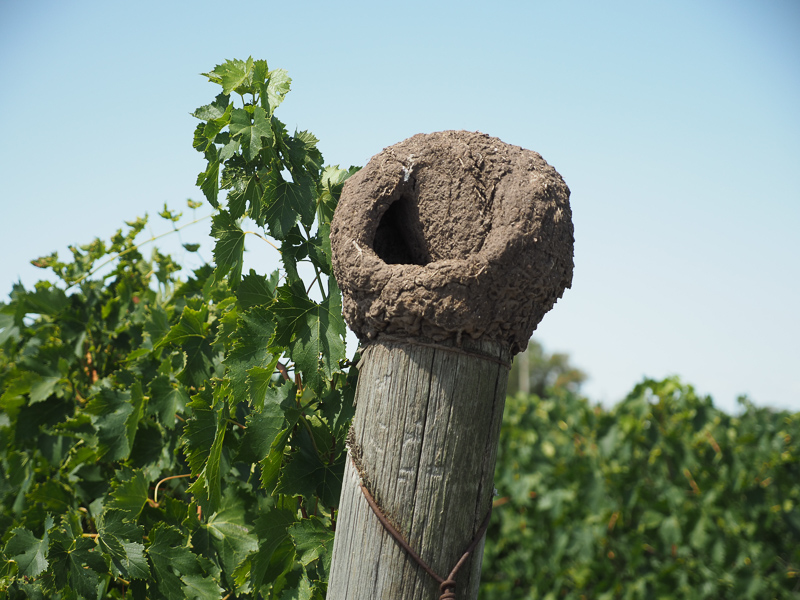
Traditional viticulture here is with a single vertical canopy, but some use the split-canopy lyre system, which gives bigger yields, although it is more difficult to manage.
What makes Tannat so good? ‘We don’t know, but my grandfather, being Italian, started planting Italian grapes that he liked, such as Nebbiolo and Barbera,’ says Daniel. ‘But he soon discovered that the neighbours made better wines with Tannat. So he planted Tannat. So did everybody. Now Uruguay has the biggest Tannat vineyard in the world.’
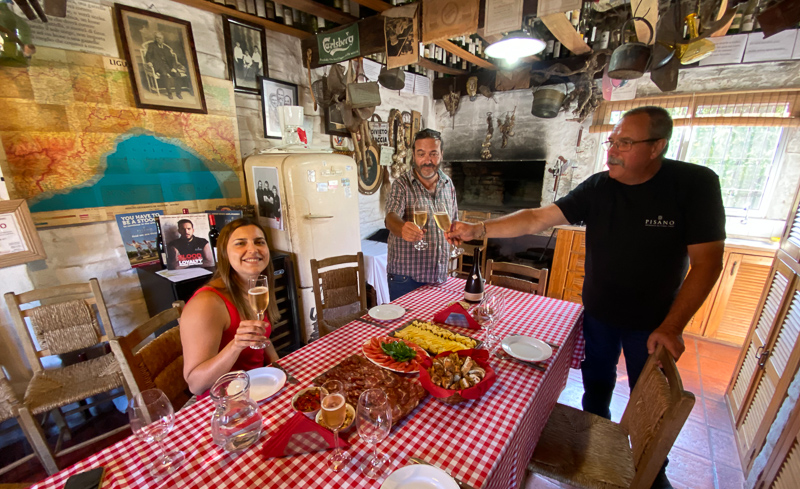
Daniel adds, ‘If Uruguay didn’t have Tannat, we’d have nothing to say. We wouldn’t exist.’
‘The key word for us is differentiation,’ He says. ‘We never say we have a better terroir than Argentina or Chile. We have a different one. Also, our wines vary from producer to producer. In more industrial viticulture with big companies, the wines are very alike. Here, the wines are like the dogs: they resemble their master. So our wines are robust and full bodied. The personality of the producer goes into the wines.’
They have tried lowering their yields, but the problem they find with this is that the grapes don’t ripen as well.
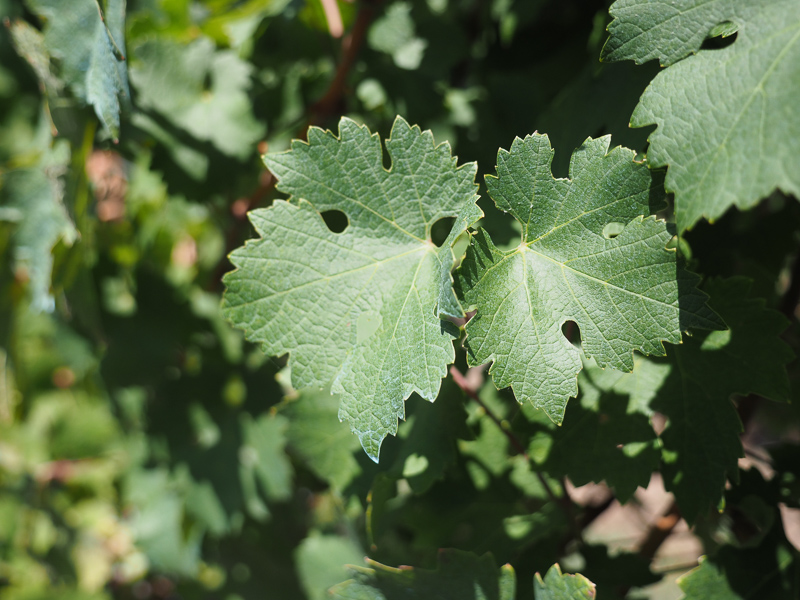
They have Sangiovese which they planted in 1997. ‘We got the wrong clone,’ says Daniel They wanted the Sangiovese Grosso to make a big powerful Sangiovese like Brunello. Theirs was soft. Then Paolo di Marche in Tuscany (he’s married to a Uruguayan) came to see them. ‘He said no, you’ll never make a Brunello style, because this is not the right Sangiovese,’ he says. So they started dumping the wine in a local blend until Gabriel, the nephew of Daniel, asked to buy the grapes and he made his own Sangiovese.
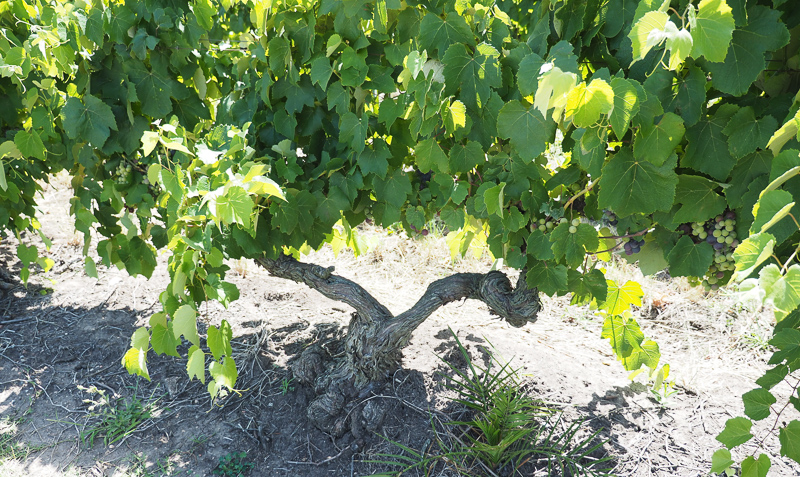
They still have remnants of the old vineyard: a 1916 planting of Vitis labrusca on its own roots. ‘The wine you make is a fresh wine for drinking young, but it doesn’t age,’ says Daniel.
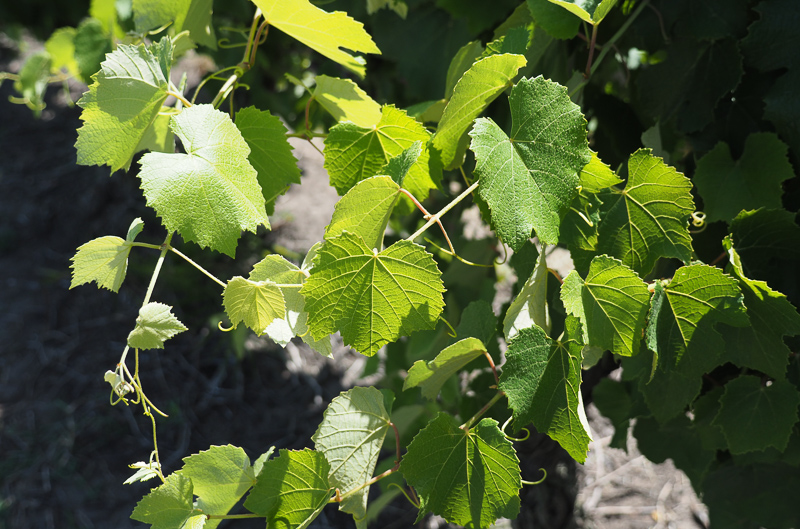
They were sad to uproot the original vineyard, so they kept some of the vines for nostalgia’s sake, and transplanted them. We tried the grapes: they had a jellyish, strawberry taste, and a slight slimy texture.

Viña Progreso
Nephew Gabriel Pisano made and experimental wine in 2009. He’d worked in Priorat, and on his return did a Tannat wine in barrel. He sent a 3 month sample of Tannat made this way, which he called Viña Progreso, to the SAQ in Quebec. They were interested and wanted to buy it. Gabriel was forced to found his own company. He now does 30-50 000 bottles a year as a negociant operation, buying in grapes. These are export only wines with a retail of around US$18.
Viña Progreso Overground Viognier 2019 Uruguay
12.5% alcohol. Very fresh and lively with lovely precision. Chiselled citrus fruit with some herbs and a touch of apricot. Zesty and linear with keen acidity. Lots of fresh fruit here. 89/100
Viña Progreso Reserva Sangiovese 2017 Uruguay
13% alcohol. Fresh, bright, supple and juicy with some herby notes and a grainy savouriness as well as cherry and plum fruit. Nice sappy hints with appropriate greenness. This is very appealing. 89/100
Viña Progreso Overground Cabernet Franc 2018 Uruguay
14% alcohol. Good concentration allied with freshness. Has a juicy blackcurrant core, some sour cherry, and nice gravelly undertones. Very Cabernet Franc with bright fresh fruit as the focus. A bit chalky. 91/100
Overground Tannat 2018 Uruguay
Juicy, bright and fresh with nice red cherry and plum fruit with a brambly edge. Pure and juicy with nice sappiness and a mineral streak on the finish. A very supple, drinkable wine. 90/100
Underground Limited Edition Barrel-Less Tannat 2019 Uruguay
13.5% alcohol. Gabriel wanted to make a wine that could be in oak by concentration, but was not in oak. Lovely intensity here: vivid blackberry and black cherry fruit. Grippy and vital with firm tannins and good acidity. Concentrated and ripe, but despite its youth it is really drinkable already. There’s freshness and structure, but it works. 93/100
Viña Progreso Barrica Abierta Elisa’s Dreams Tannat 2015 Uruguay
14% alcohol. Integral vinifciation in an open top barrel after hand destemming. Has some cedar, cinnamon and vanilla notes but also lovely fresh black cherry and blackberry fruit. Nice density here with a bit of grippy structure. Has all the ingredients to age well. 92/100

Pisano
Río de los Pájaros Torrontes 2019 Progreso, Uruguay
13% alcohol. Smuggled the cuttings back in 1980. At the time this variety didn’t exist in Uruguay. It wasn’t available. They brought some cuttings in and grew them and then used the buds for grafting. They were expecting the Torrontes cuttings to die because of phylloxera because they were ungrafted, but they lived 30 years, so they think that Torrontes may have adapted and grown some resistance. Very aromatic with lovely grapey, herby terpenic notes. Very fine, fresh and linear on the palate. Has some saline hints, nice brightness and a citrus and table grape purity. No bitterness here (they avoid skin contact). So distinctive. 92/100
Río de los Pájaros Cabernet Franc/Syrah Rosé 2019 Progreso, Uruguay
13.5% alcohol. Saignée wine. Nice pink colour. Has freshness with a leafy green edge to the cherry and redcurrant fruit. Very bright and dry with nice fruit quality. Zesty finish. 89/100
Río de los Pájaros Reserve Pinot Noir 2017 Progreso, Uruguay
13% alcohol. First planted Pinot Noir in 2000. It has taken them a long time to understand how to grow it. Supple and bright with a savoury edge to the cherry and plum fruit. Has a bit of grip here with a juicy edge. Has some grainy structure. Lighter style red but still has good structure. 89/100
Río de los Pájaros Tannat, Syrah, Viognier 2018 Progreso, Uruguay
13% alcohol. Second and third use barrels. This is a blend originally made for KLM. In 2007 their Dutch importer came with a KLM buyer and they wanted a wine for the air. This is deep in colour and supple and juicy with sweet black cherry and blackberry fruit. Very pure and vital with lovely sweet berry fruits and a bit of grip. This is really delicious and pure. 92/100

Pisano RPF Pinot Noir 2017 Progreso, Uruguay
RPF is Reserva Personal de la Familia. Destemmed. Has some cedar and spice from the oak, with fresh red cherry and berry fruits, and a hint of rhubarb. Red cherries and plums with a hint of mint on the palate. Has a savoury, spicy edge, with some grip on the finish. 90/100
Syrah is very rare in Uruguay. Many years it can be ‘feeble’ and needs to be picked early. You get a really good wine once every three years.
Pisano RPF Syrah 2017 Uruguay
Part of their Syrah vineyards are selection massale from the vineyards of Beaucastel. This is so well balanced with a peppery edge to the supple, elegant red berry fruits. Shows lovely drinkability with a hint of white pepper on the palate, alongside the fleshy, expressive cherry and berry fruit. A very fine cool-climate Syrah. 94/100
Pisano RPF Petit Verdot 2017 Uruguay
13.5% alcohol. A lovely wine. Supple and vibrant with juicy blackberry and cherry fruit. This has a subtle green edge with nice flesh and almost approachable. Good concentration and density with a complete character rarely seen in Petit Verdot. Hints of olive and spice. Very impressive, with refined structure and potential for development. 94/100
Pisano RPF Tannat 2017 Uruguay
14% alcohol. ‘For me, this is the most Pisano wine in the range,’ says Gustav Pisano. Select the blocks, 10-12 vinifications of Tannat. After the different vinification, using native yeasts, commercial yeasts, length of maceration altered. Always cold maceration pre ferment. This is around 8 days so they don’t need to over-extract once fermentation starts. In their minds they select the blocks for this Tannat. Taste a lot and blend. Don’t have a single-vineyard label, but instead look for a style of wine. Supple and juicy with nice freshness. There’s some spiciness here with a bit of grip, but nice fresh, ripe berry fruits with some blackberry richness. Has a savoury, chalky edge to the fruit. Very stylish. 92/100
Pisano Arretxea Tannat Gran Reserva 2015 Uruguay
13.5% alcohol. Not made every year. In honour of their mother. This is fresh and bright, with good concentration. Tannic, but the structure is quite fine. Lovely juiciness. Raspberries, blackberries and even some blackcurrant. This is really nice, with great balance and lovely fruit expression. 94/100
Pisano Arretxea Tannat Gran Reserva 2011 Uruguay
13.5% alcohol. Lush, sweet, but fresh black cherry and blackberry fruit. This is really supple with nice fruit expression. Hints of gravel and tar, and ageing really nicely with great focus. Has some elegance allied to ripeness and drinkability. A really lovely expression of Tannat. 94/100
Axis Mundi Gran Reserva Tannat 2011 Uruguay
14% alcohol. 24-30 months in oak. Concentrated and dense with sweet cherry and blackberry fruit, with a bit of evolution and notes of spice, tar, leather and earth. Has a sweet green note in the background with some nice juiciness and a slight saltiness on the finish. Ripe and sleek, made in a modern style, but with some lovely tannic depth and focused fruit. A real wine for ageing, reminiscent of a top Rioja Gran Reserva. 93/100
Find these wines with wine-searcher.com

